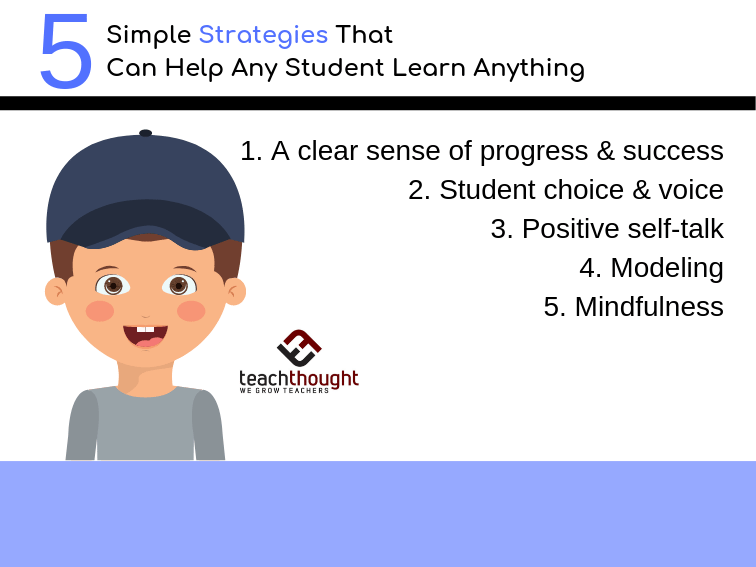
What Psychology-Based Strategies Help Students Learn?
contributed by Drs. Donna Wilson and Marcus Conyers
Empowered with some basic information about how the mind and brain work during learning, teachers can plan to use some new strategies for supporting high student achievement.
Through the years we have facilitated the use of brain-based strategies that help foster growth mindsets through the internalization of learning successes, individual choice, positive self-talk, and teacher modeling. Teachers tell us that using these teacher-friendly tools can jumpstart the learning process early in the year.
1. A clear sense of progress & success
A success file is a continually updated collection of work students are proud to have completed. A bright cheery personalized file provides ready evidence to help students internalize and remember their learning successes throughout the term. As time goes on, through the year success tends to breed success as students are engaged in tracking their learning victories.
2. Student choice
The brain’s ‘reward circuit’ stimulates dopamine when students have the opportunity to choose and achieve a learning goal based upon their personal interests.
A simple technique to introduce choice in learning projects is to let students choose how they want to prove their learning. Students may choose to make a video, post a blog, write an essay, tell a story, act out a scene, create a movie poster, sing a song, or create a poster. There are many that ways students can demonstrate what they have learned after completing a unit of study or reading a book.
3. Positive self-talk & growth mindset
Emphasizing positive self-talk is important to help students develop an optimistic attitude about learning. Show students how to use positive self-talk by example. When showing students how to work out a challenging problem, consistently use language such as, “I know this will be hard, but I can do it!” This will help them to internalize a motivational, rather than a discouraging voice they might hear saying, “This just too hard—there’s no way I’ll get it right.” Shifting away from self-doubt and self-nagging, all students can learn to pay themselves a compliment for learning gains, no matter how small.
4. Modeling
Through actions such as demonstrating enthusiasm for learning tasks, teachers model that learning can be rewarding and deserving of effort. This can be done by the teacher as a think-aloud, or modeled by select students in small groups or role-playing exercises in front of the class, or even watched via an existing video from YouTube where someone demonstrated this kind of attitude in an ‘authentic’ situation.
Of course, modeling skills and competencies–anything from phonetics to solving an algebraic equation–are also commonly modeled, often in a ‘show me, help me, let me’ gradual release of responsibility approach. ‘Showing someone how to do something’ is an age-old approach to teaching that, while seemingly lacking innovation, can sometimes be the simplest path towards learning for a student.
5. Mindfulness
A teacher’s well-being is critical. Immense gratification can be found in moments when learning lights up a student’s face. Intentionally staying in the moment of those small, incremental successes, rather than thinking about other tasks and troublesome dilemmas, may help you stay attuned to what you love about teaching. Another of our simple strategies that teachers have found to be beneficial is to consistently be mindful of one thing that has worked well for you during each school day and have a short reflection on that prior to leaving school.
The feedback we have received from many teachers over the years suggests that these practical strategies can become a positive part of daily classroom life. As teachers create joyful classrooms where learners flourish, we find that our own creativity and joy for learning increases.
Drs. Donna Wilson and Marcus Conyers, ASCD authors of Teaching Students to Drive Their Brains, are co-founders of BrainSMART, a professional development group dedicated to improving teaching and learning through innovative frameworks and strategies for putting research into practice. They are authors of 20 books and 75 articles and developers of the world’s first graduate degree programs in brain-based teaching. The duo’s original approach is featured on ASCD’s new video series, Teaching Students to Drive Their Brains. On Video #1 Donna models teaching elementary students about their brilliant brains and how they can learn how to how to better drive their brains. Video #3 features a lesson on how children can learn how to become more optimistic about learning.
Five Simple Strategies That Can Help Any Student Learn